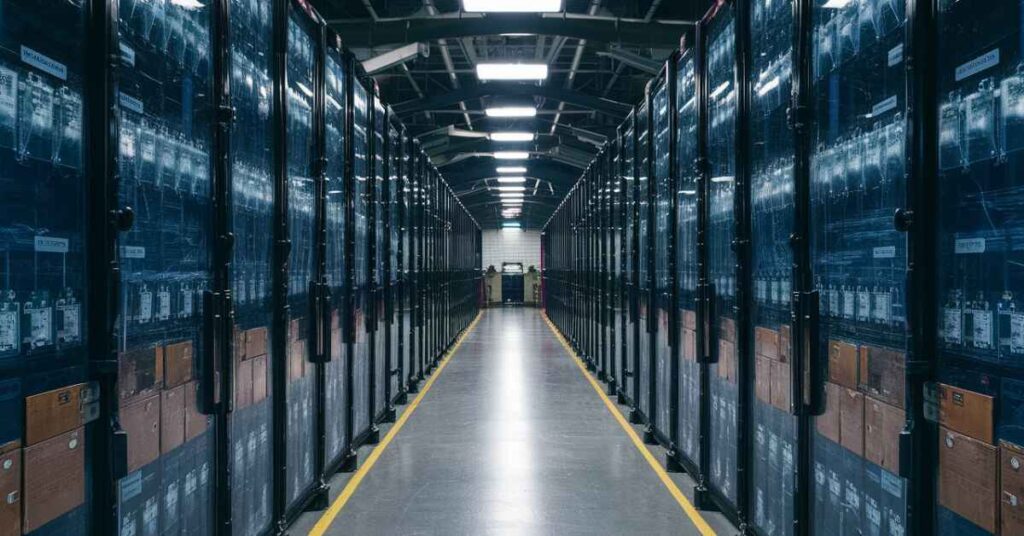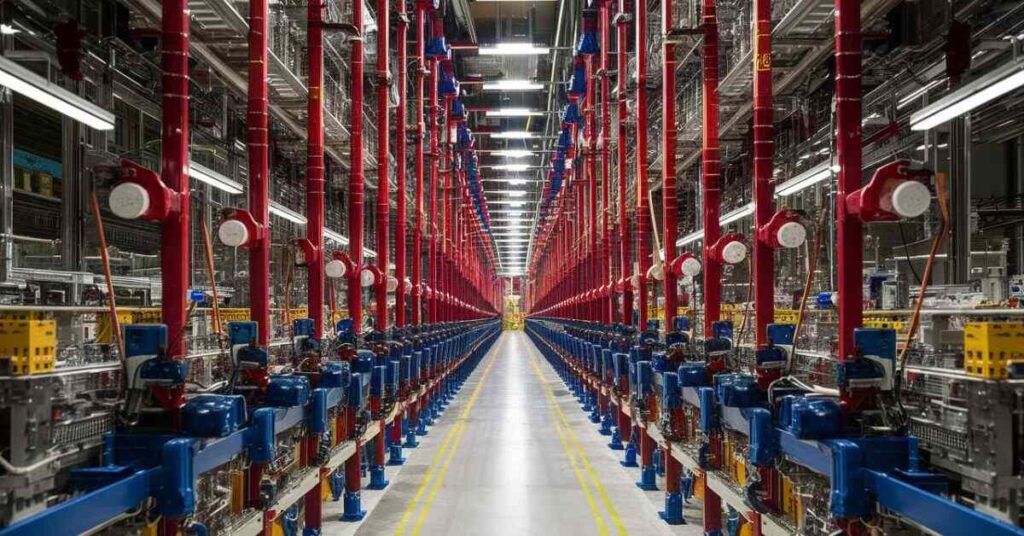In today’s global marketplace supply chains are the routes that pump products materials and information across the world. However, the single needs of different industries mean their supply chain and logistics desires can vary drastically.
From stringent stratosphere regulations to the need for lightning-fast e-commerce deliveries. Crafting an efficient supply chain strategy requires understanding your industry’s individualities. Let’s explore some key sectors and their distinctive supply chain challenges.
The Highly Regulated Aerospace Supply Chain
When manufacturing aircraft workings or satellites there is zero room for error. A single faulty part can potentially lead to catastrophic consequences. As a result the aerospace supply chain is governed by inflexible quality control and traceability regulations.
Every material, process, and supplier must undergo rigorous verification and documentation. Components often have long lead times for production, with low tolerances for defects. It’s like trying to build a plane while blindfolded and mid-flight you need absolute precision and careful coordination across the entire supply network.
- AS9100 Certification: This standardized quality management system is mandatory for the aviation, space, and defense industries.
- Full Material Traceability: Comprehensive records tracking raw materials from their original sources through every manufacturing process.
- First Article Inspection (FAI): Rigorous testing and documentation of initial production runs before full manufacturing release.
- Controlled Unidirectional Material Flow: Strict procedures to ensure no cross-contamination or mix-ups between approved and unapproved materials.
Failure to adhere to these standards can result in costly rework delays penalties even grounding of entire fleets if issues arise post-delivery.
Crucial Cold Chain Logistics for Pharmaceuticals
When transporting temperature-sensitive pharmaceuticals and biologics maintaining the proper “cold chain” is imperative. Deviations from specified temperature ranges can degrade or even ruin valuable drug shipments.

Much like aerospace the pharmaceutical supply chain is tightly regulated by agencies like the FDA and EMA. Serialization involving unique identifiers on every salable unit is required to enable full traceability and prevent counterfeit drug infiltration.
Temperature excursions where shipments exceed maximum temperature thresholds, can be incredibly costly. One case study found that a single temperature breach affecting a $100,000 drug shipment could result in over $1 million in losses after factoring in:
- Replacement product cost
- Shipping fees
- Treatment costs if administered to patients
- Regulatory penalties and fines
To mitigate risks cold chain logistics incorporates:
- Thermal blanket shippers and refrigerated containers
- Real-time temperature monitoring via data loggers
- Cold room/freezer farm storage at distribution hubs
- Validated cold chain packaging tested for durability
With high-value, life-saving pharmaceuticals on the line, these stringent cold chain controls are essential.
Read this Blog: Unlocking Exciting Careers in E-Commerce Logistics & Supply Chain Management with a Degree or Specialized Certificate
Need for Agility in Fashion & Apparel Chains
On the flip side fast-moving fashion and apparel supply chains require rapid responsiveness to ever-changing consumer tendencies and demands. Sourcing textiles and manufacturing clothing involves long lead times and global supply networks. But by the time those products arrive, consumer tastes may have already shifted.
Sourcing Closer to Demand: Rather than sourcing from lowest-cost regions like Asia, some retailers are “near-shoring” or “re-shoring” production closer to major consumer markets. This reduces lead times and increases responsiveness.
Rapid Replenishment Models: Demand-driven processes automatically trigger replenishment based on point-of-sale data, rather than historical forecasts prone to error.
Postponement Strategies: Retailers delay product configuration or differentiation until deeper in the supply chain. This enables rapid cost-effective customization and minimizes overstock/understock issues.
| Postponement Strategy | Definition |
| Labeling Postponement | Applying retail tags/labels at the last moment based on demand |
| Manufacturing Postponement | Delaying final assembly until confirmed orders are received |
| Packaging Postponement | Bulk shipping of generic white-labeled goods to be packaged closer to consumers |
By embracing agility the goal is to create apparel supply chains that can quickly sense and respond to dynamic consumer preferences as they occur.
E-Commerce Revolutionizing Retail Logistics
The rise of e-commerce giants like Amazon has revolutionized retail supply chains and consumer delivery expectations. Consumers now demand an endless aisle of products delivered rapidly and inexpensively.

Amazon’s capability to consistently identify and meet rapidly changing buyer expectations has redefined convenience for a large segment of buyers and merchants
To keep pace, retail supply chains are being redesigned from the ground up for omnichannel flexibility and faster last-mile delivery. Some key priorities shaping e-commerce logistics include:
Last-Mile Delivery Speed & Costs: Most e-commerce costs are transportation-driven, making minimizing final delivery expenses crucial. Innovations like crowdsourced delivery fleets and urban fulfillment centers aim to bring products closer to populous areas.
Inventory Visibility & Control: Providing unified real-time inventory visibility across e-commerce sites and physical stores. Distribution nodes are key to delighting customers and minimizing operational inefficiency. Advanced order management systems are essential for orchestrating this complexity.
Reverse Logistics: With 25-30% of e-commerce purchases returned, accommodating reverse shipment flows is a major undertaking. Streamlining return processes and maximizing reusable components drive cost savings and sustainability.
While challenging, omnichannel e-commerce supply chains open opportunities for competitive differentiation through faster fulfillment times and seamless ordering experiences across channels.
The Unforgiving Food & Beverage Supply Chain
Few supply chains are as unforgiving and complex as the food and beverage industries. Not only are there strict quality and safety regulations to uphold but also temperature-controlled distribution and minimizing waste are paramount.
Food Safety Regulations & Traceability:
- Stringent requirements around handling, storage, and distribution processes
- Full farm-to-fork traceability from raw ingredients to finished goods
- Detailed recordkeeping to enable rapid recalls if issues arise
Cold Chain Distribution & Shelf-Life Constraints:
- Maintaining proper refrigeration and freezing at precise temperatures
- Careful monitoring of remaining shelf life upon receipt
- Efficient inventory management to minimize expired/spoiled goods
Just-in-Time Inbound & Outbound Coordination:
- Timing inbound ingredients and packaging for maximum freshness
- Distributing finished goods rapidly to stores and consumers
- Addressing seasonal demand spikes (e.g. holidays)
A single breakdown in the food & beverage chain can spoil entire shipments and potentially jeopardize consumer health. Cutting-edge technology like blockchain, IoT sensors advanced planning software is increasingly adopted to digitize traceability and optimize the orchestration of these complex webs.
Complex Just-in-Time Manufacturing Choreography

For manufacturers embracing just-in-time (JIT) and lean production models, ensuring the perfectly timed inbound flow of materials and components is crucial. Any parts shortages can grind assembly lines to a halt, wasting valuable time and money.
- Minimal On-Site Inventory: Parts and raw materials are delivered just hours before they’re required on the line.
- Frequent, Precisely-Timed Deliveries: Inbound shipments are sequenced to seamlessly flow directly to the point of use.
- Kanban Replenishment Signals: Visual stock level indicators automatically trigger replenishment orders with suppliers.
- Built-in Supply Flexibility: Multiple sourcing options and other risk mitigation tactics hedge against disruptions.
A real-world example is the Toyota Supply Chain in Japan. Suppliers locate factories adjacently and make continuous deliveries of parts in precisely the quantities and sequences required. Any delays rapidly back up the entire system.
While lean and JIT reduce costs, create efficiency and increase quality, the downside risk is high if not executed flawlessly. Careful planning and close integration with suppliers is required.
Conclusion
However, the core principle remains the same your supply chain strategy must be tailored to the specific requirements and risks of your industry. There is no one-size-fits-all approach.
With a thorough assessment of factors like these, you can design robust supply chain processes policies, and technology tooling optimized for your particular needs.
The payoff for getting this right is substantial – reduced costs, faster cycle times, better quality, and ultimately much happier customers. But it requires careful analysis upfront.
No matter which industry you’re in, having the right supply chain strategy perfectly tailored to your unique requirements is essential for profitability and competitive advantage. Companies that truly understand their supply chain peculiarities will outpace rivals through greater efficiency agility customer responsiveness.


![Find a Section 8 houses for rent with no deposit Revealed! [2024]](https://busslirra.com/wp-content/uploads/2024/08/Find-a-Section-8-houses-for-rent-with-no-deposit-Revealed-2024-300x157.jpg)







![Find a Section 8 houses for rent with no deposit Revealed! [2024]](https://busslirra.com/wp-content/uploads/2024/08/Find-a-Section-8-houses-for-rent-with-no-deposit-Revealed-2024-150x150.jpg)
